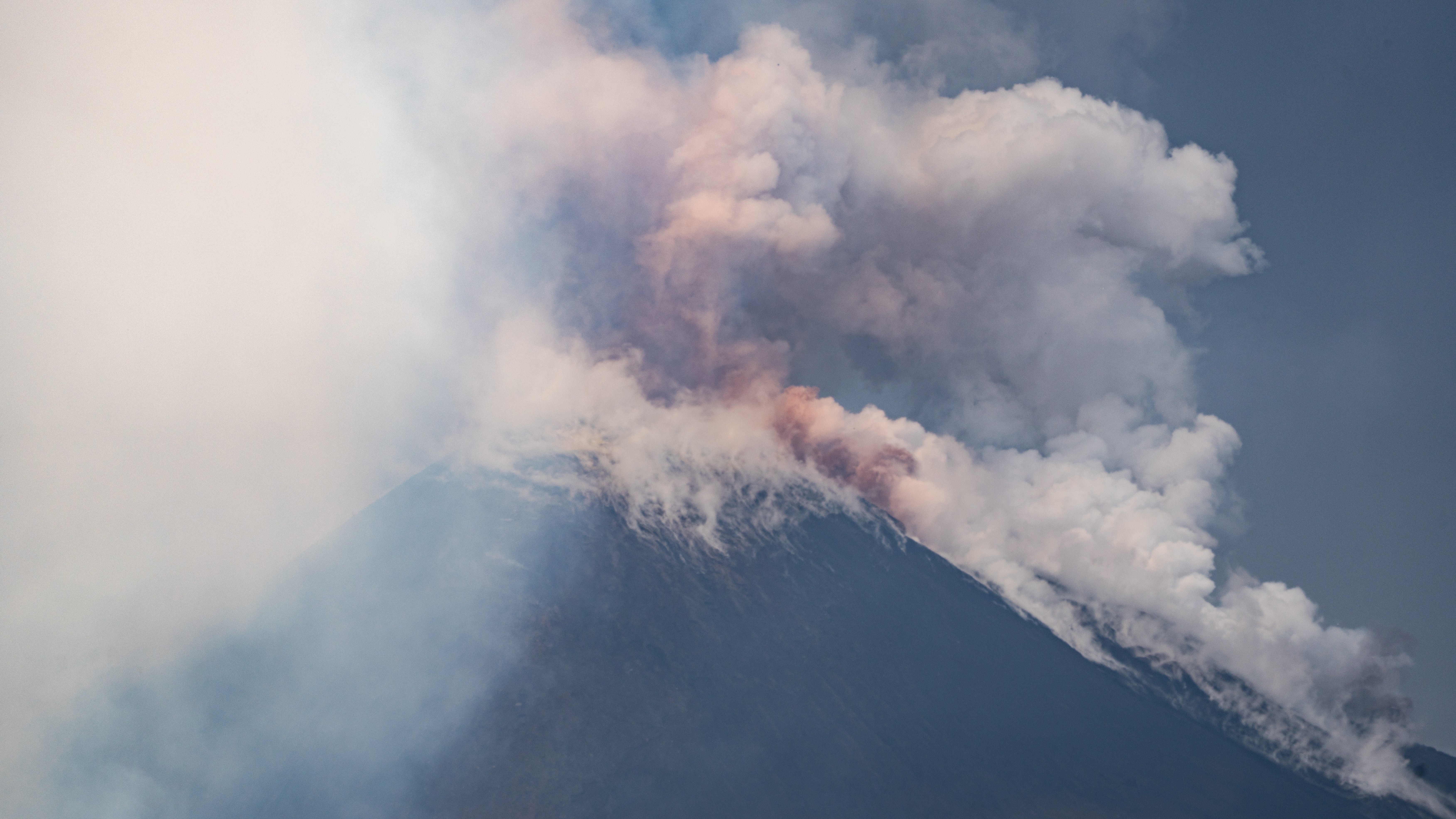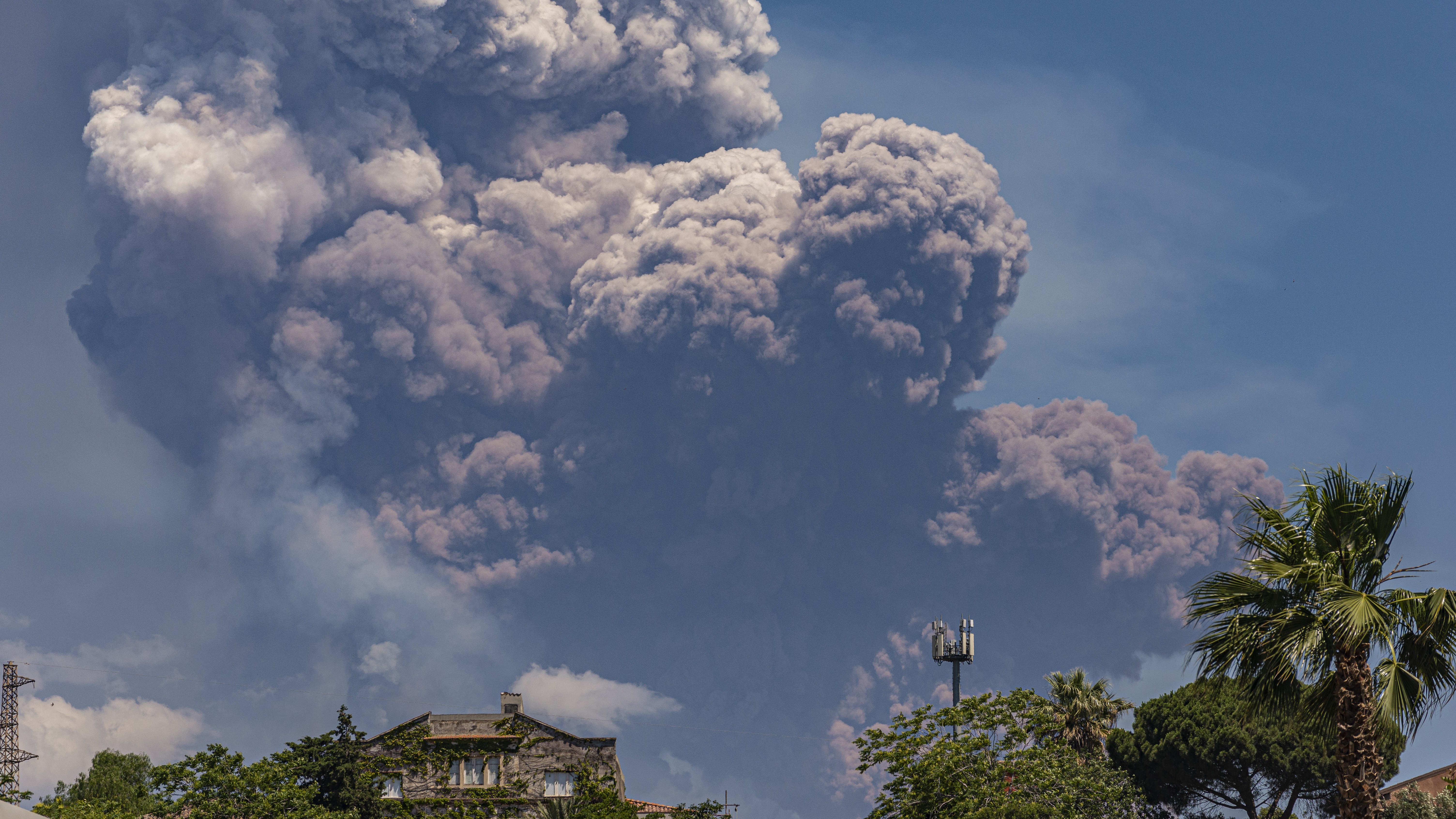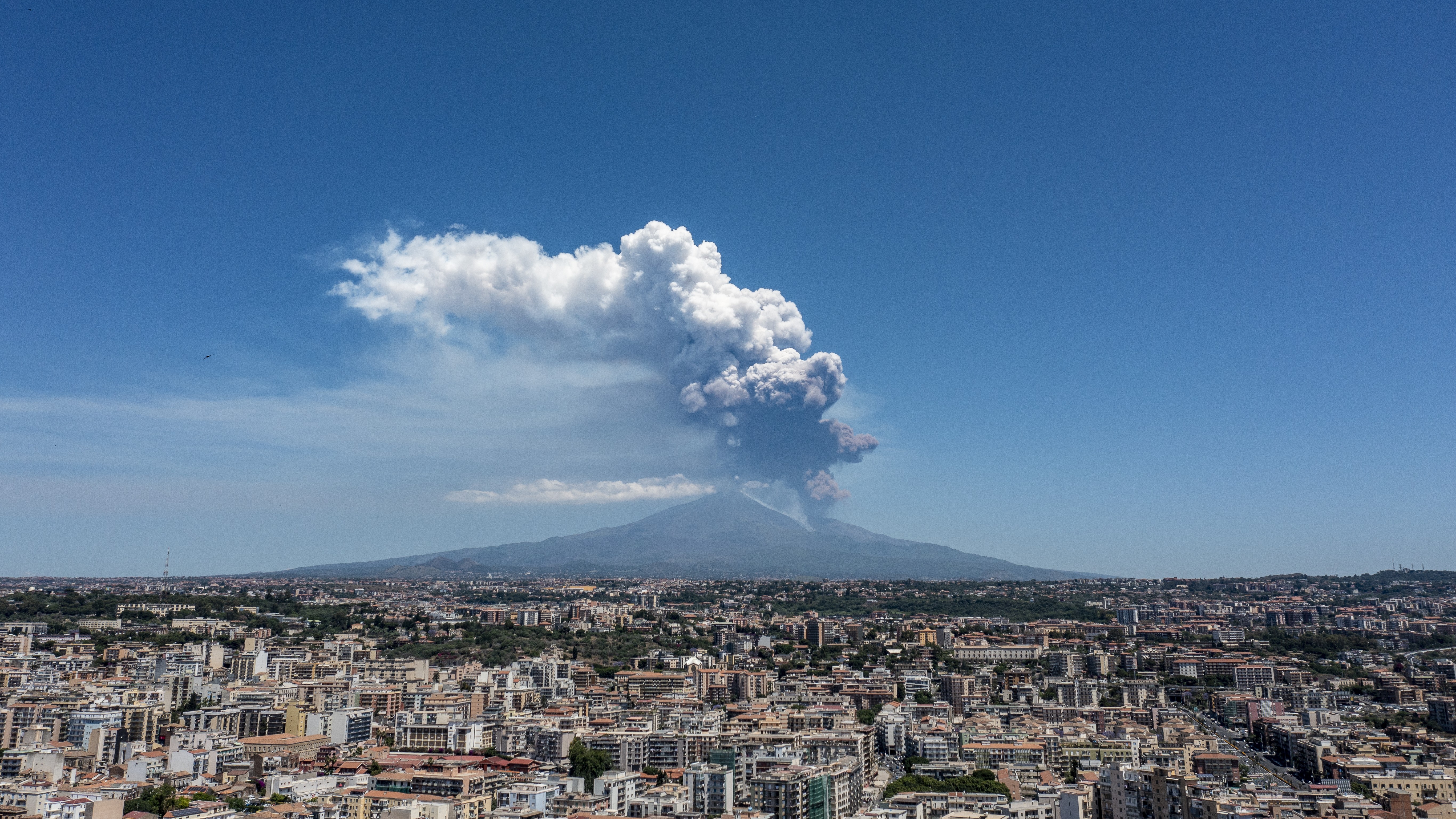On June 2nd, Mount Etna erupted, sending a surge of hot material streaming down its slopes and creating a towering cloud of ash above Sicily. Live Science has compiled striking images and videos documenting this remarkable event, which is said to be the largest eruption by Etna in over ten years.
As the largest active volcano in Europe, Mount Etna has a long history of eruptions, according to the Smithsonian’s Global Volcanism Program. The eruption on June 2nd marked its most significant activity since 2014, as reported by ITV News.
In 2014, Mount Etna experienced multiple episodes of volcanic activity, including explosive events and a lava fountain near the site of the recent eruption. The volcano has remained quite active since then, with the current eruptive phase kicking off on November 27, 2022.
Amass of hot lava, ash, gas, and other volcanic debris, known as a pyroclastic flow, began racing down Mount Etna around 11:20 AM local time.
Related: WATCH Mount Etna erupt: Europe’s largest volcano erupts as tourists rush to safety

The latest eruption of Mount Etna seems to have originated from a collapse in the southeast crater. This explosive activity resulted in three primary lava flows, which are currently cooling, according to an update from the Etnean Observatory, part of Italy’s National Institute of Geophysics and Volcanology.
#Etna 2025 suite de l’éruption pic.twitter.com/95sZiVHGbMJune 2, 2025
Sudden eruption on Etna volcano! #etna #sicily #volcano pic.twitter.com/WCpwNcQ5U8June 2, 2025
Tourists witnessed a vast cloud of ash and other volcanic materials rising above as they fled the scene. While some people paused to capture the moment, others hurriedly escaped. Thankfully, there have been no reports of injuries.

The ash cloud from the eruption rose as high as 21,300 feet (6,500 meters), based on a midday update from the Toulouse Volcanic Ash Advisory Centre in France. Since Mount Etna stands at roughly 11,000 feet (3,350 m), the ash cloud soared nearly twice as high as the volcano itself.

The eruption released large quantities of sulfur dioxide (SO2) into the atmosphere, according to the Toulouse Volcanic Ash Advisory Centre. When this gas is expelled from a volcano, it can combine with other substances to create a haze known as volcanic smog (vog). Breathing in enough vog can lead to respiratory issues and other health concerns, such as irritation to the eyes and skin, according to the United States Geological Survey.

Mount Etna overlooks the city of Catania, which has a population of over 1 million. Residents and guests witnessed the eruption from the streets as the ash cloud obscured a previously clear blue sky.

The eruption ceased by 4:56 PM local time, when the Etnean Observatory issued an update on the volcano’s status. The Toulouse Volcanic Ash Advisory Centre noted that there was no ash cloud present by 4:22 PM, and by 5:22 PM, the ash cloud was clearing.

